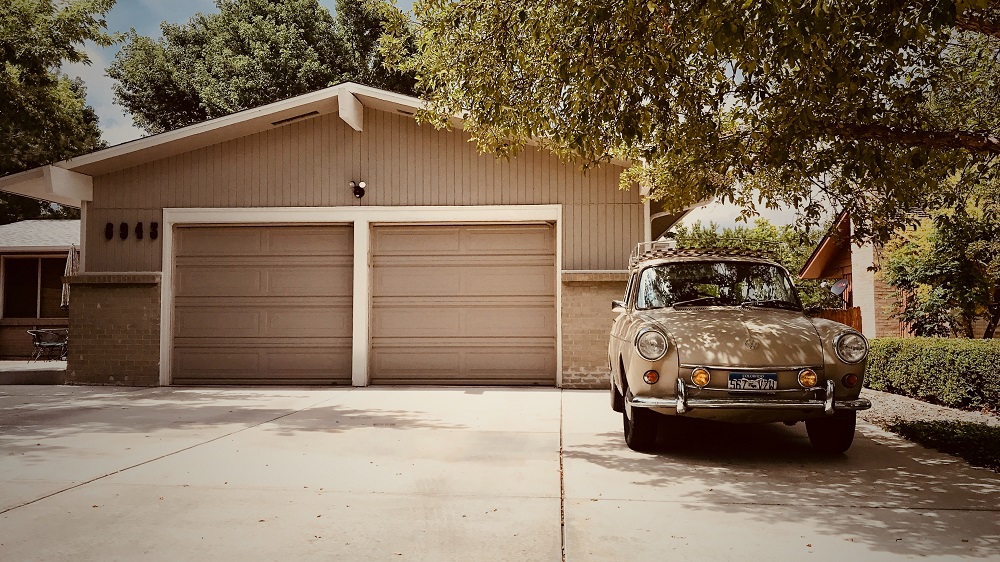If you live in the UK, you know that our garages are often a bit disappointing. Most single garages aren’t wide enough to fit a modern car inside (especially if you want to get out of the car afterwards), and double garages aren’t as common as you would think. So it’s no surprise that many people are looking for new ways to use these spaces. And one of the most popular options in the last few years has been a conversion.
A garage conversion allows you to unlock the potential hiding in your garage, add more functional space into your home, and increase its market value at the same time. But there is a lot you need to know before you make that decision, so today we’re going to answer some of the most frequently asked questions about garage conversions, to get you started.
Do I Need Planning Permission?
In most cases, you won’t need any sort of planning permission to convert your garage. Integral garages almost always fall under permitted development, but it’s always worth double-checking with your local council to make sure your conversion is a legal one.
The exception to this is any property in a Conservation Area, an Area of Outstanding Natural Beauty, or a National Park. If you live in any of these areas, then it’s very possible your property is classified as a listed building (which means you will need Listed Building Consent), or that any work you want to undertake will need specific planning permission.
Even if you’re sure you’re in the clear, it’s always worth contacting your local authority to check if any planning conditions are attached to the property that you don’t know about. These conditions will have been laid out when the property was first built and can include a lot of things, but one of the more common is that the property must have ‘a retained place to park’. This means any garage has to stay as a garage. This doesn’t mean the end of your garage conversion dreams – you can apply to have these conditions removed – but it will add some time onto the project.
What Regulations Do I Need To Know About?
As with any type of building work, there are going to be some regulations that you will need to follow. Under UK Building Regulations a garage conversion is classified as a ‘change of use’, so as the property owner, it’s your responsibility to ensure the changes still meet building regulations. This applies to:
Fire Safety: Escape routes and appropriate fireproofing need to be in place.
Ventilation: Moisture proofing and good ventilation are essential.
Thermal Performance: Floor, wall and loft insulation is required.
Acoustics: Soundproofing is a must to ensure no noise or nuisance for the neighbours.
Electrics: Certain electrical work must only be carried out by a qualified electrician.
Structural Concerns: Foundations will need to be assessed and reinforced where necessary for safety.
Your builder should be aware of all the regulations that need to be followed, and will help you submit a building notice (or full plans application if needed) to your local council office. Once the work is done, a council inspector will need to visit to make sure everything is up to code.
How Long Does A Garage Conversion Take?
Um.. how long is a piece of string? Honestly, this one is hard to answer because it depends so much on your property, your location, whether you need planning permission if you need to reinforce the foundations, and what you’re planning to use the conversion for. A kitchen or utility room is going to take longer to install than a playroom, for example.
However, what we can do is share a typical schedule of works for converting a garage, which will help you understand the steps both you and the builder need to go through and keep track of what stage you’re at in development.
- Investigate whether the garage is suitable for conversion.
- Check if planning permission is required.
- Start on the design proves
- Apply for planning permission (if needed)
- Ask your builder or architect to produce detailed design and building regulations drawings (this is so that you know everything is in order)
- Contact your insurance company to update your cover and add on any building works cover if you need it.
- Let Building Control know when work starts.
- Strip the existing garage back to the structure being kept.
- Make structural alterations, like knocking through walls or altering the roof.
- Damp-proof the floor.
- Insulate the walls and floor. The roof will need to be insulated as well if it’s a single-story conversion.
- Fit underfloor heating (if required).
- Pour floor screed.
- Install windows and doors.
- Connect and install electrics, plumbing and joinery.
- Plasterboard and plastering.
- Fit new internal doors, mouldings (like skirting boards), and all final floor covering and lights.
This is the basic schedule you will start with. Any extras (like installing a kitchen) will slot into this and affect the timeline.
Do I Need Insurance?
It depends.
If you’re project managing the build yourself, then you will need extra insurance to cover loss or damage, the cost of materials, tools and equipment, and public liability (for anyone coming to your home while work is going on). You can arrange this with your existing insurer.
If you’re using a builder, then they will have their own insurance to cover the conversion, but double-check with them before you start work. It’s usually the sign of a cowboy builder if they don’t have insurance.
Either way, you will need to update your home insurance provider once the conversion is finished so that it’s covered in your contents and buildings insurance moving forward.
While it’s too late to start a garage conversion in time for Christmas, at DNA Brickwork & Builders we are taking bookings for garage conversions in 2024 right now. So if you’re planning to change things up and make your garage a useable space, or if you’d just like to know if it’s possible, give us a call, and we’ll be happy to help.




